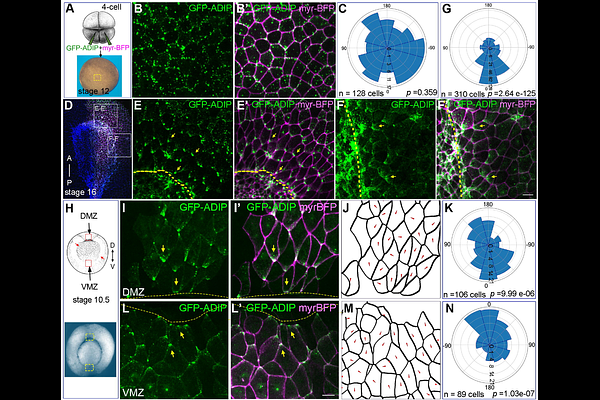Mechanical cues organize planar cell polarity during vertebrate morphogenesis and embryonic wound repair

Mechanical cues organize planar cell polarity during vertebrate morphogenesis and embryonic wound repair
Chu, C.-W.; Velayudhan, S. S.; Schauser, J. H.; Krishnakumar, S.; Yang, S.; Itoh, K.; Alfandari, D.; Trusina, A.; Sokol, S. Y.
AbstractPlanar cell polarity (PCP) is a phenomenon of coordinated cell orientation in many epithelia and is required for early morphogenetic events, such as vertebrate gastrulation or neural tube closure that place embryonic tissues in their proper locations. Known PCP complexes segregate to opposite edges of each cell due to regulatory feedback interactions, however, whether and how PCP is connected to the tension-sensing machinery has been elusive. Here we observed dynamic polarization of Afadin- and -Actinin-interacting protein (ADIP) in the epithelia adjacent to the involuting marginal zone and the folding neural plate of Xenopus embryos, suggesting that it is controlled by mechanical cues. Supporting this hypothesis, ADIP puncta relocated in response to the pulling forces of neighboring ectoderm cells undergoing apical constriction. Moreover, ADIP puncta rapidly polarized in embryos subjected to stretching and during embryonic wound healing. ADIP formed a mechanosensitive complex with the PCP protein Diversin that was distinct from known core PCP complexes and required for wound repair. We propose that mechanically controlled planar polarization of the ADIP-Diversin complex guides cell behaviors in normal morphogenesis and during wound healing.